What Planet Has Acid Rain
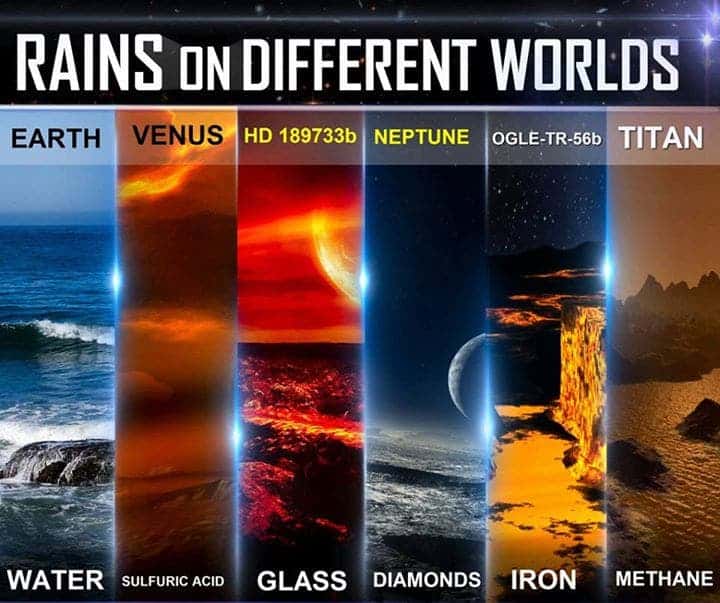
Y'all may have seen this image making the rounds on social media, but is it really truthful? Sure, World is the only place with liquid h2o and nosotros know it rains here, merely do other worlds likewise have rain? Perhaps rains of methane, iron, or even diamonds? Let's notice out.
Does it rain sulfuric acrid on Venus?
Venus is the second planet from the Lord's day, and in many ways, it is only like Earth. It's similar in size, mass, composition and even proximity to the Sun — but that's where the similarities terminate. The temper of Venus is composed of 96.v% carbon dioxide, while most of the remaining 3.5% is nitrogen.
Its atmosphere is extremely dumbo, and information technology'southward estimated that the atmospheric mass is 93 times that of Earth's atmosphere, whereas the pressure at the planet's surface is most 92 times that at Globe's surface. Early evidence pointed to the sulfuric acid content in the atmosphere, but we now know that that is a rather minor (though yet meaning) constituent of the temper.
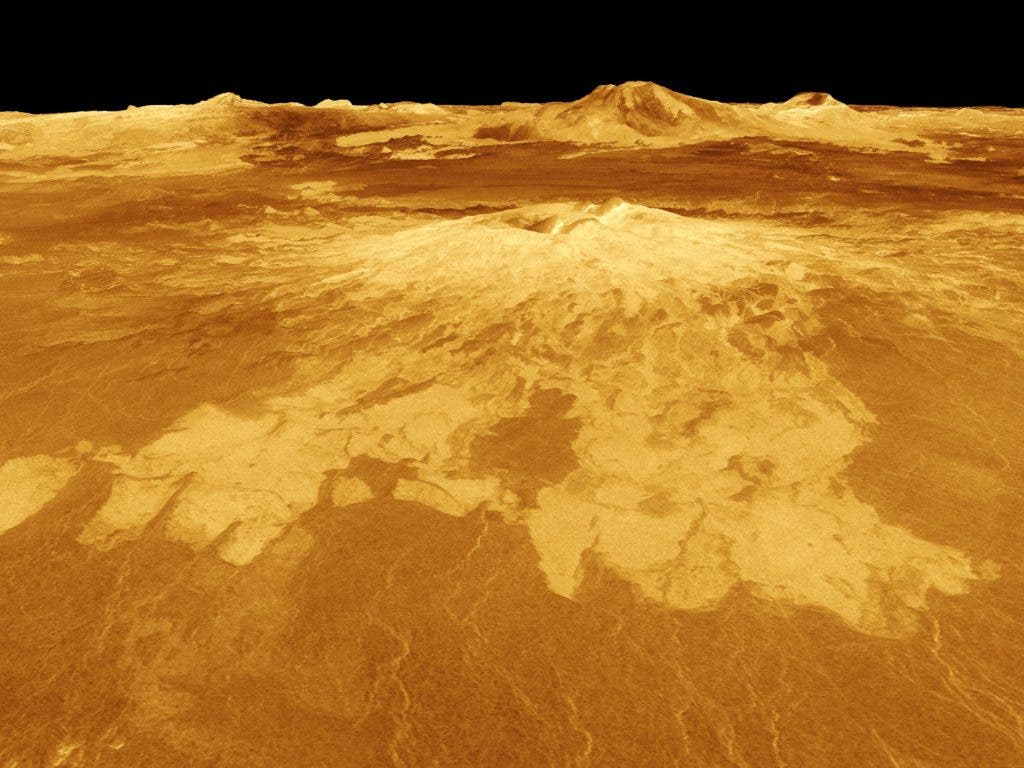
Because CO2 is a greenhouse gas and Venus has and then much of it, temperatures on the planet accomplish a scorching462 °C — much higher than that of Mercury, which is much closer to the Sun.
The Venusian atmosphere supports opaque clouds made of sulfuric acid, extending from about 50 to 70 km. Beneath the clouds, there is a layer of haze down to near xxx km and below that it is clear. Above the dense CO2 layer there are thick clouds consisting mainly of sulfur dioxide and sulfuric acid droplets.
The thing is, there is no rainfall on the surface of Venus — while sulfuric acid rain falls in the upper atmosphere, it evaporates around 25 km above the surface. Also, sulfur dioxide concentrations in the atmosphere, which dropped past a factor of 10 between 1978 and 1986, which suggests that the sulfur in the atmosphere actually comes from volcanic eruptions.
The clouds are likewise extremely acidic and there is besides lightning on Venus. The sulphuric acrid droplets can be highly electrically charged, and so they offer the potential for lightning. The surface of Venus can be accurately described as a hellish and unforgiving place.
Verdict: Information technology does rain sulfuric acrid on Venus, but not on the surface, rather at 25 km high in the atmosphere. The sulfur may come up from volcanic eruptions.
Does information technology rain Drinking glass on Hard disk 189733b?

Hard disk 189733b is an extrasolar planet approximately 63 light-years abroad from the Solar System. The planet was discovered in 2005.
With a mass 13% higher than that of Jupiter, HD 189733 b orbits its host star once every 2.2 days, making it a so-called hot Jupiter. Hot Jupiters are a grade of extrasolar planets whose characteristics are like to Jupiter, but that take high surface temperatures considering they orbit very close to their star.

The planet was discovered using Doppler spectroscopy — an indirect method for detecting extrasolar planets. Basically, you don't observe the planet itself, you study its stars and notice whatsoever tiny wobbles in information technology with Doppler shifts. In 2008, a team of astrophysicists managed to detect and monitor the planet's visible light the first such success in history. This issue was further improved past the aforementioned team in 2011. They constitute that the planetary albedo is significantly larger in blue light than in the cerise. Just the blueish doesn't come up from an ocean or some watery surface – information technology comes from a hazy, turbulent atmosphere believed to be laced with silicate particles – the stuff of which natural glass is made.
The planet has incredibly fast winds and the estimated temperature of over 1000 degrees Celsius, and then the rain is likely more horizontal than vertical.
"It rains glass, sideways, in howling vii,000 kilometre-per-hour winds," Frederic Pont of the Academy of Exeter.
NASA astronomers now believe that the planet has a scorching temperature around two times higher than Venus, and well-nigh certainly features a dry atmosphere — there's almost certainly no h2o on its surface, though there is a possible condensate in its atmosphere, magnesium silicate (MgSiO3), raining downward equally solid fragments.
Verdict: We don't know for certain, but it likely rains silicate particles (you can consider them glass) on the planet we telephone call Hard disk drive 189733b.
Does it pelting Diamonds on Neptune?
Neptune is the eighth and farthest planet from the Lord's day in the Solar Arrangement (sorry Pluto). Neptune's composition is similar to that of Uranus and different to that of gas giants like Saturn and Jupiter.
Neptune'southward temper is equanimous primarily of hydrogen and helium, along with traces of hydrocarbons and possibly nitrogen; however, it contains a college proportion of "ices" such equally water, ammonia, and methane.
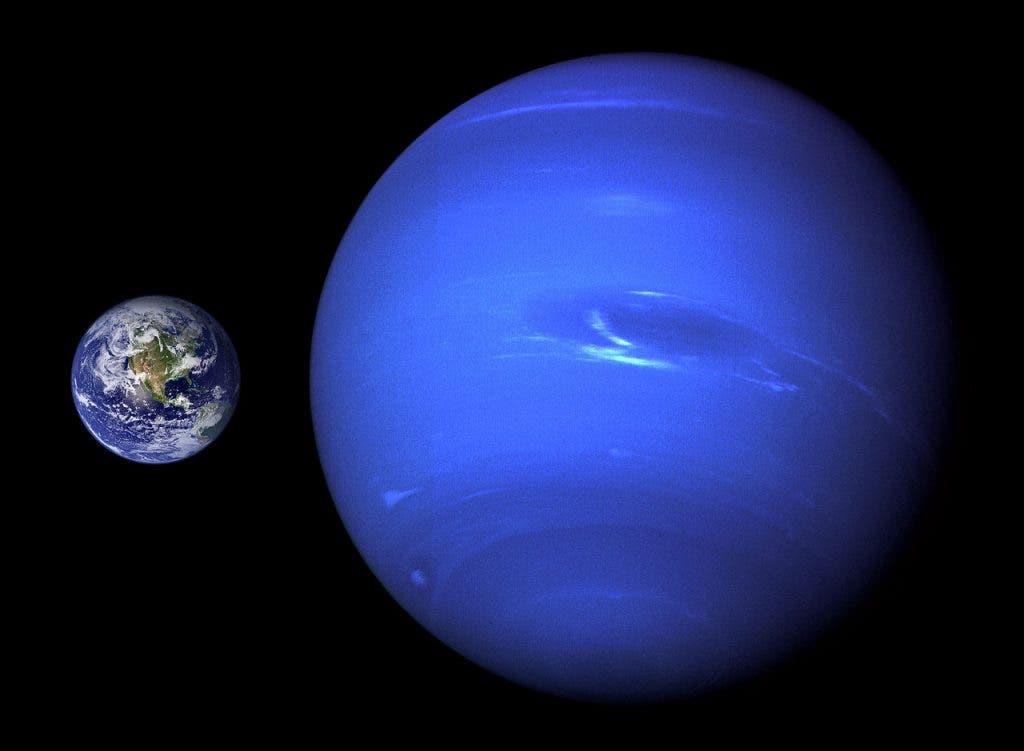
Neptune's weather is characterized by extremely dynamic storm systems, with winds reaching speeds of almost 600 one thousand/south (2160 km/h). The affluence of methane, ethane, and ethyne at Neptune'due south equator is 10–100 times greater than at the poles. It has been theorized that Uranus and Neptune really crush marsh gas into diamonds, and lab experiments seemed to confirm that this is possible. However, you demand pregnant pressures to do that, and y'all need to get some 7000 km within the planet – but keep in heed, the planet is made out of gas (grossly eighty% hydrogen, 19% helium and 1% methane).
"Once these diamonds form, they fall like raindrops or hailstones toward the center of the planet," said Laura Robin Benedetti, a graduate student in physics at UC Berkeley.
Diamonds may be very rare on Earth, simply astronomers believe that they are very mutual in the universe. Molecular-sized diamonds have been found in meteorites, and recent experiments advise that large amounts of diamonds are formed from methane on the ice giant planets such as Uranus and Neptune. Some planets in other solar systems may consist of almost pure diamond.
Equally for the rain, it'due south estimated that at a depth of 7000 km, the conditions may exist such that methane decomposes into diamond crystals that pelting downward like hailstones.
Neptune and Uranus aren't unique in this regard. There is a very expert chance that many other gas giants in our galaxy have like atmospheres. In fact, a contempo study found that one particular planet chosen 55 Cancri E has a drapery that may exist mostly diamond. That'due south because the planet's composition contains high levels of carbons, which, at expected temperatures and pressures, would exist compressed into diamonds.
Verdict: It probable rains diamonds on Neptune, but not on the surface — 7000 km deep into the depths of the gas planet.
Does information technology pelting Iron on OGLE-TR-56b?
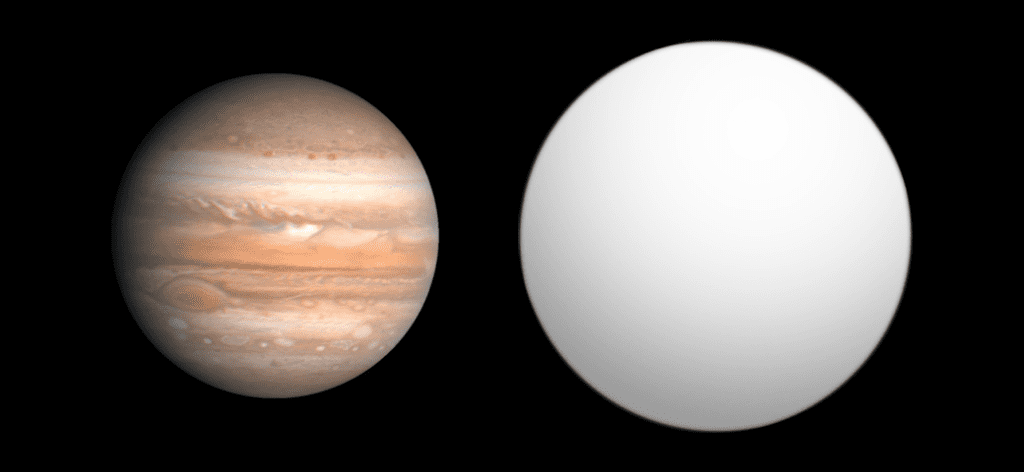
Out of all the planets hither, we know the least about OGLE-TR-56b. Astronomers from the Harvard-Smithsonian Center for Astrophysics (CfA) in Cambridge detected it back in 2003. At the time, it was the farthest planet always discovered, and although that tape has long been beaten, we oasis't actually learned all that much about information technology. Fifty-fifty its Wikipedia entry is a mere paragraph with links to a few studies presenting its discovery.
OGLE-TR-56b is also a Hot Jupiter, with an estimated surface temperature of 2000 degrees Celsius, which is hot plenty to form clouds made of iron atoms. Nosotros have no direct data to confirm this, although astronomers reported bear witness for iron pelting on brown dwarfs — so-called "failed stars", objects too big to be a planet but too small to be a star.
Verdict: We don't know if information technology rains iron on OGLE-TR-56b… but information technology'southward certainly possible. Information technology about certainly rains atomic number 26 on some brown dwarfs.
Does information technology rain Methane on Titan?
Titan is the largest moon of Saturn. Information technology is the only natural satellite known to accept a dense atmosphere, and the merely object other than Earth where articulate evidence of stable bodies of surface liquid has been found. Titan has liquid seas fabricated of hydrocarbon, lakes, mountains, fog, underground water oceans and yeah, it does pelting methane on Titan. In fact, Earth and Titan are the only worlds in the Solar Arrangement where liquid rains on a solid surface — through over again, the rain is marsh gas and not water.
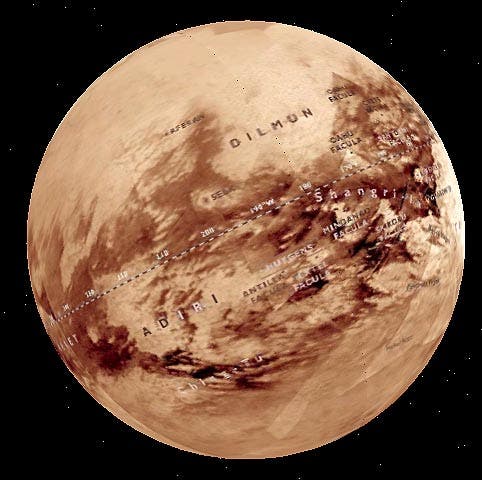
Interestingly enough, in many ways, the conditions on Titan is similar to that on World. The climate — including wind and rain –creates surface features similar to those of Earth, such as dunes, rivers, lakes, seas (probably of liquid methane and ethane), and even deltas. The same type of conditions patterns present on Earth are also establish on Titan, and Titan'south methane bike is a proficient analogue to Earth's water bicycle, although at a much lower temperature.
Titan gets 100 times less solar radiation than Globe, so the average surface temperature is well-nigh −179 °C. At this temperature water ice has an extremely depression vapor pressure, so the atmosphere is nearly free of h2o vapor. However, the methyl hydride in the atmosphere causes a substantial greenhouse upshot which keeps the surface of Titan at a much higher temperature than would happen otherwise.
The terrain on Titan is likely not fabricated upward of pocket-sized grains of silicates like the sand on World, but rather might have formed when liquid methane rained and eroded the water ice bedrock, possibly in the form of wink floods. The satellite fifty-fifty has dunes, much like World'southward own deserts.
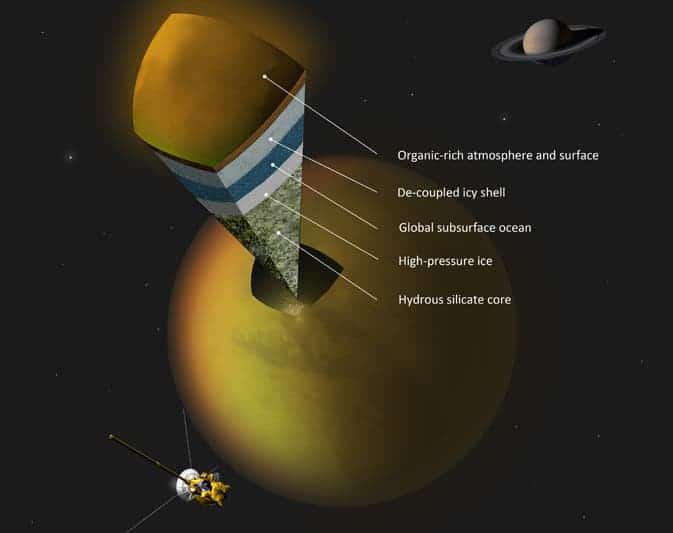
Clouds typically cover 1% of Titan'southward deejay, though outburst events take been observed in which the deject cover rapidly expands to as much as eight%. The weather on Titan is dominated by Saturn; it was summer in Titan'due south southern hemisphere until 2010, when Saturn's orbit, which governs Titan's move, moved Titan's northern hemisphere into the sunlight.
Verdict: Information technology does rain methane on Titan.

Rubies and sapphires on HAT-P-7b
Are diamonds just not enough for you? Signs of powerful changing winds have been detected on a planet 16 times larger than Earth called HAT-P-7b, but that's hardly the most impressive thing about this planet. Although it's hard to confirm this, astronomers believe that the clouds on this planet would be made of corundum — a crystalline class of aluminium oxide which forms rubies and sapphires.
While such a sight would no doubt exist visually stunning, information technology's also a hellish place to be. Aside from these unusual clouds, HAT-P-7b remains very of import as the start detection of weather condition on a gas giant planet outside the solar system.
Verdict: We're not sure, but information technology might rain rubies and sapphires HAT-P-7b.
The universe is a large and wild place, and we're merely barely starting to scratch its surface. While information technology may pelting water on Earth, that's not the rule by any any means — on many different planets, it can rain many different things. Who knows what we'll discover in the future?
What Planet Has Acid Rain,
Source: https://www.zmescience.com/other/science-abc/rain-titan-earth-neptune/
Posted by: pricewhave1982.blogspot.com


0 Response to "What Planet Has Acid Rain"
Post a Comment